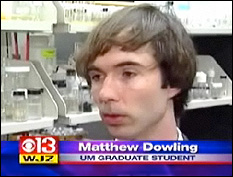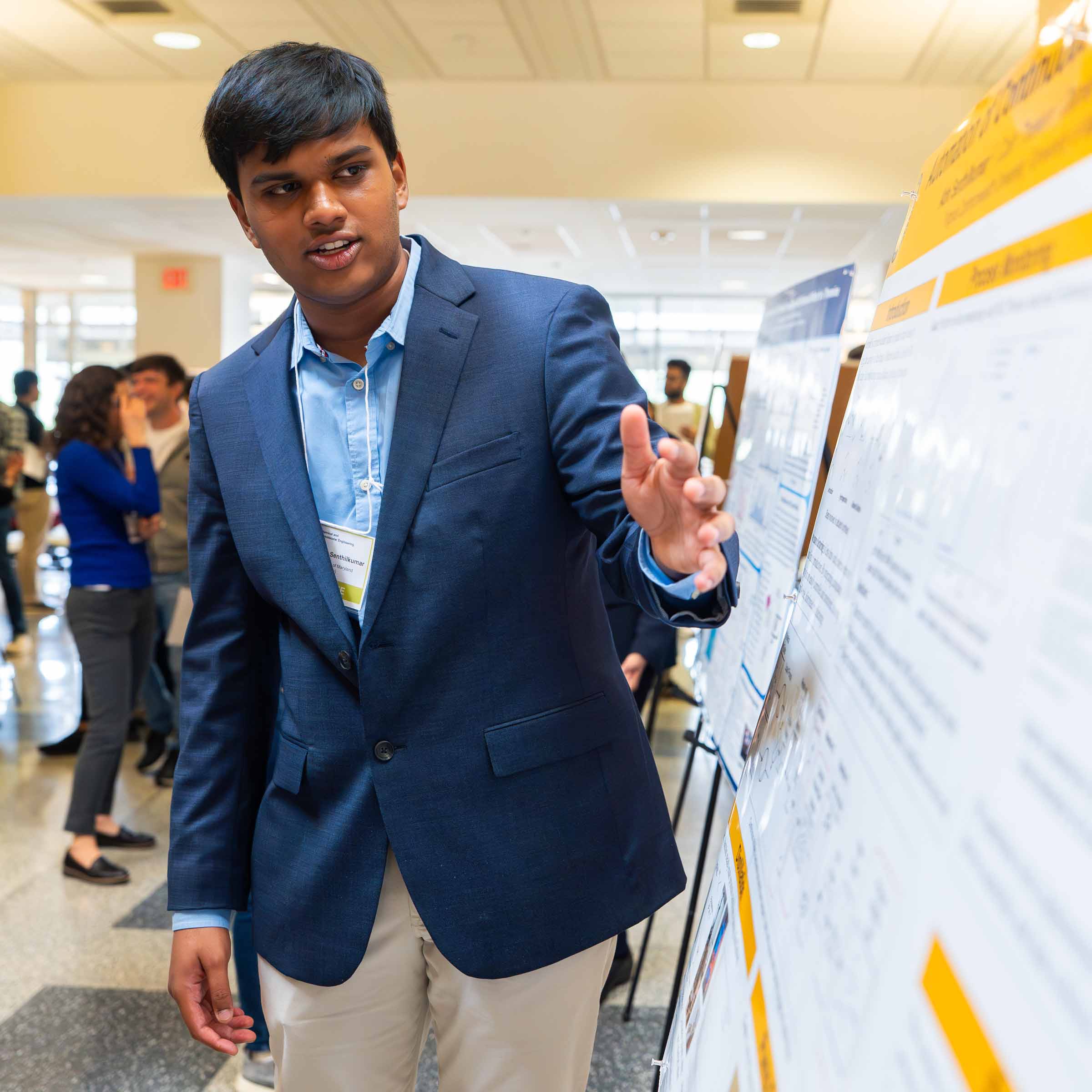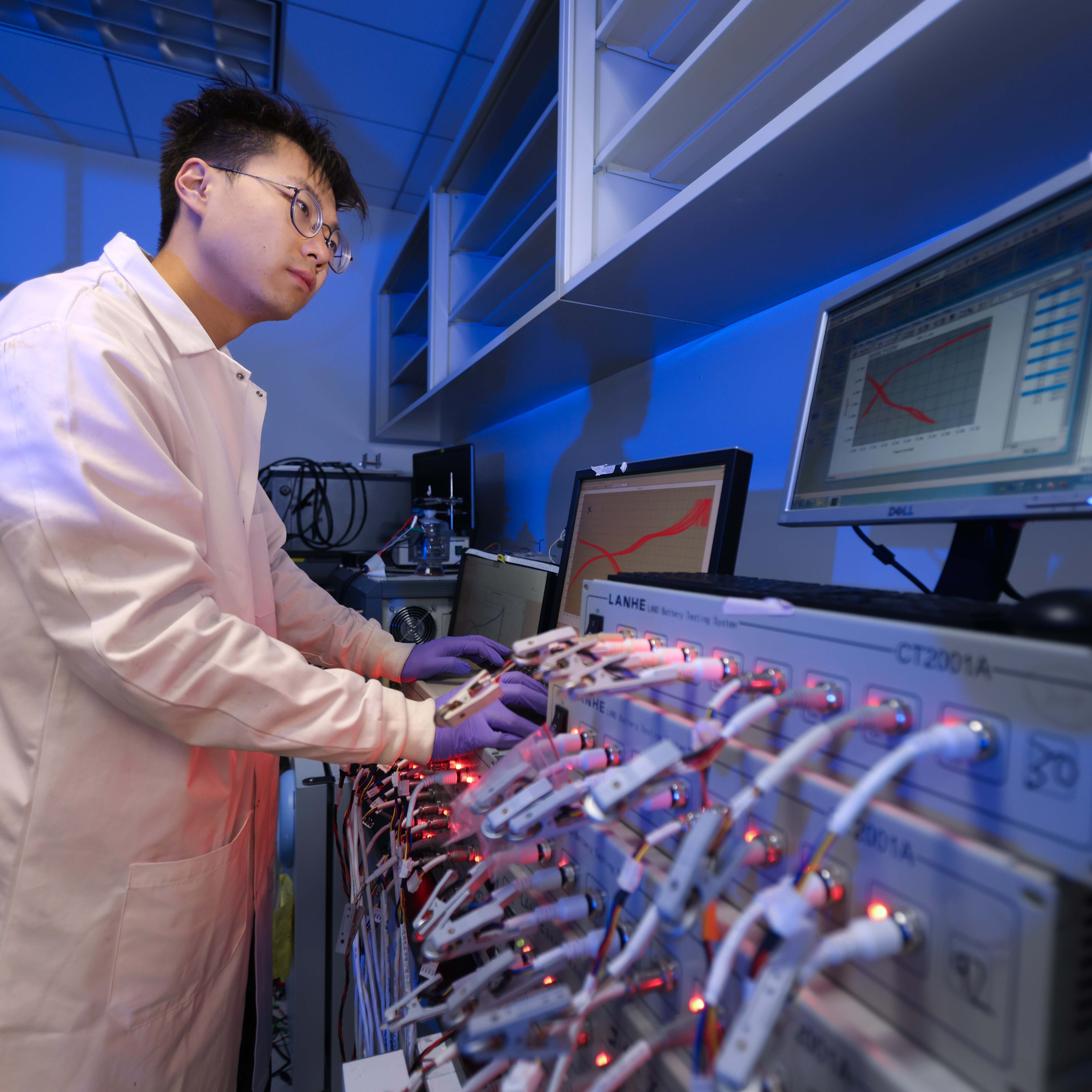News Story
WJZ Covers New Chitosan Blood Clotting Product

Reporter Alex DeMetrick visited the Complex Fluids and Nanomaterials Group, directed by ChBE Associate Professor Srinivasa Raghavan, where he interviewed the professor, graduate student and Fischell Fellow Matt Dowling (BioE, advised by Raghavan), and the University of Maryland Biotechnology Institute's Professor Gregory Payne, director of the Center for Biosystems Research.
Payne, one of the first scientists in Maryland to conduct research based on chitosan's unique properties, has collaborated with Raghavan on previous projects. An expert on chitosan, he explained that its antimicrobial and biocompatible nature, combined with its ability to interact with human tissue, makes it a good choice for use in hemostatic bandages such as those carried by soldiers in Iraq.
 | |
BioE graduate Student and Fischell Fellow Matt Dowling (left) being interviewed for the segment. |
The Remedium product featured in DeMetrick's story is designed to stop bleeding under conditions in which sutures won't work or can't be administered. Chitosan, while known for its blood-clotting ability, becomes saturated and ceases to adhere to tissue after only 30 minutes. Remedium has developed a modified chitosan "sponge" capable of functioning for several hours, increasing patients' chances of surviving serious injuries such as gunshot wounds.
"It's a small tweak that goes a long way," Dowling tells DeMetrick in the report.
The same material could also be used in a surgical spray. Animal studies of the product are being conducted at the University of Maryland School of Medicine, and so far look promising.

 | |
Top: Professor Gregory Payne (left) describes chitosan's qualities to reporter Alex DeMetrick. Below: Professor Srinivasa Raghavan (right) explains why Remedium's product is an improvement over others currently on the market. |
Remedium is also using chitosan to create a dressing for chronic wounds such as ulcers and burns. It works by packaging growth factors (proteins that stimulate cell proliferation) and other therapeutics into nano-containers anchored to a biocompatible chitosan matrix by naturally occurring self-assembly. The resulting device can deliver various bioactive compounds for wound healing.
Currently, Remedium is in its start-up phase as many of its founding members work on securing funding and continuing the research while still working on their degrees. The group won funding for their efforts by placing second in the university's 2007 $50K Business Plan Competition, and Dowling has continued to present the company's work by entering similar competitions around the country. Recently, they again placed second at the New Ventures World competition hosted by the University of Nebraska, Lincoln.
Remedium's other founding and present members include alumnus Bani H. Cipriano (Ph.D. '07, chemical engineering), BioE graduate student Peter Thomas, ChBE research associate Oluwatosin Ogunsola (Ph.D. '05, chemical engineering), and former ChBE research associate Chao Zhu, all of who are or were advised by Raghavan.
For More Information:
Watch the WJZ TV news segment "Crabs Move From Dinner Table To Battlefield" »
Visit the Complex Fluids and Nanomaterials Group web site »
Visit the Center for Biosystems Research web site »
Related Stories:
"Not Just for Eatin': Blue Crab Nano-Sensor Detects Dangerous Substances" »
(Clark School press release)
Published May 21, 2008









